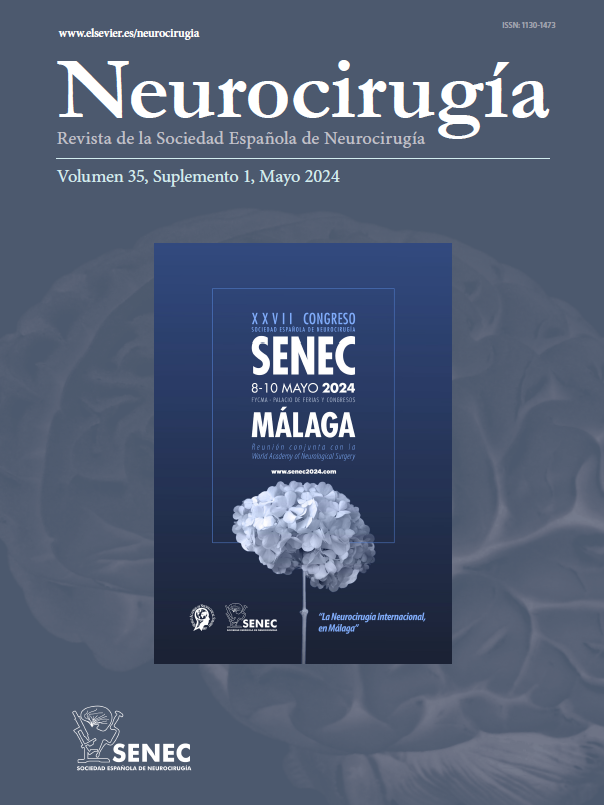The anterior communicating artery (AcoA) aneurysms represent the most complex aneurysms of the anterior circulation. For years, surgical challenges including the intricate anatomy and narrow surgical corridor have been overcome using supplementary techniques including extended craniotomies, wide opening of the cisterns, gyrus rectus resection and special clips like fenestrated clips. However, imaginative solutions such as intraoperative clip modification may be inevitable in particular cases for safe clipping.
We retrospectively analyzed clinical records of two patients who required clip modification intraoperatively.
Case #1 underwent microsurgical clipping of a ruptured, 4-mm AcoA aneurysm. Unfortunately, given the short distance between the two A2s, it was not possible to clip the aneurysm without a compromise to the contralateral A2 with the available shortest 3mm-fenestrated clip. We then used the clip modification technique intraoperatively by shortening the clip tips with mesh-plaque cutter and smoothening the remaining sharp ends using cautery sanding. Eventually, the aneurysm was clipped successfully with the modified-fenestrated clip. Post-clipping imagings confirmed complete occlusion of the aneurysm and patency of parent arteries. Case 2# underwent microsurgical clipping for a ruptured, 1-mm AcoA aneurysm. Like Case 1#, the initial clipping attempt with the available shortest 4mm-fenestrated clip failed given the excessive length of the tips. The patient, thus, required clip modification as described above. The aneurysm was then clipped successfully using the modified-fenestrated clip, protecting bilateral A2s. Post-clipping imagings demonstrated patency of parent arteries with no residual aneurysm filling.
Clip modification seems to be an effective option in clipping the AcoA aneurysms when available clips are too long to secure them safely.
Los aneurismas de la arteria comunicante anterior (AcoA) representan los aneurismas más complejos de la circulación anterior. Durante años, los desafíos quirúrgicos, incluida la anatomía intrincada y el corredor quirúrgico estrecho, se han superado utilizando técnicas complementarias que incluyen craneotomías extendidas, apertura amplia de las cisternas, resección de la circunvolución del recto y clips especiales como clips fenestrados. Sin embargo, las soluciones imaginativas, como la modificación del clip intraoperatorio, pueden ser inevitables en casos particulares para un clipado seguro.
Analizamos retrospectivamente las historias clínicas de 2 pacientes que requirieron la modificación del clip en el intraoperatorio.
El caso n.° 1 se sometió a recorte microquirúrgico de un aneurisma AcoA de 4mm roto. Desafortunadamente, dada la corta distancia entre los dos A2, no fue posible clipar el aneurisma sin comprometer el A2 contralateral con el clip fenestrado de 3mm más corto disponible. Luego utilizamos la técnica de modificación del clip intraoperatoriamente acortando las puntas del clip con un cortador de placa de malla y alisando los extremos afilados restantes usando lijado con cauterización. Finalmente, el aneurisma se cortó con éxito con el clip fenestrado modificado. Las imágenes posteriores al recorte confirmaron la oclusión completa del aneurisma y la permeabilidad de las arterias originales. El caso n.° 2 se sometió a clipaje microquirúrgico por rotura de un aneurisma AcoA de 1mm. Al igual que el caso 1, el intento inicial de clipaje con el clip fenestrado de 4mm más corto disponible falló debido a la longitud excesiva de las puntas. El paciente, por lo tanto, requirió la modificación del clip como se describe anteriormente. Luego, el aneurisma se clipó con éxito usando el clip fenestrado modificado, protegiendo los A2 bilaterales. Las imágenes posteriores al clipaje demostraron la permeabilidad de las arterias originales sin relleno de aneurisma residual.
La modificación del clip parece ser una opción eficaz para recortar los aneurismas AcoA cuando los clips disponibles son demasiado largos para asegurarlos de manera segura.
Article

If it is the first time you have accessed you can obtain your credentials by contacting Elsevier Spain in suscripciones@elsevier.com or by calling our Customer Service at902 88 87 40 if you are calling from Spain or at +34 932 418 800 (from 9 to 18h., GMT + 1) if you are calling outside of Spain.
If you already have your login data, please click here .
If you have forgotten your password you can you can recover it by clicking here and selecting the option ¿I have forgotten my password¿.








